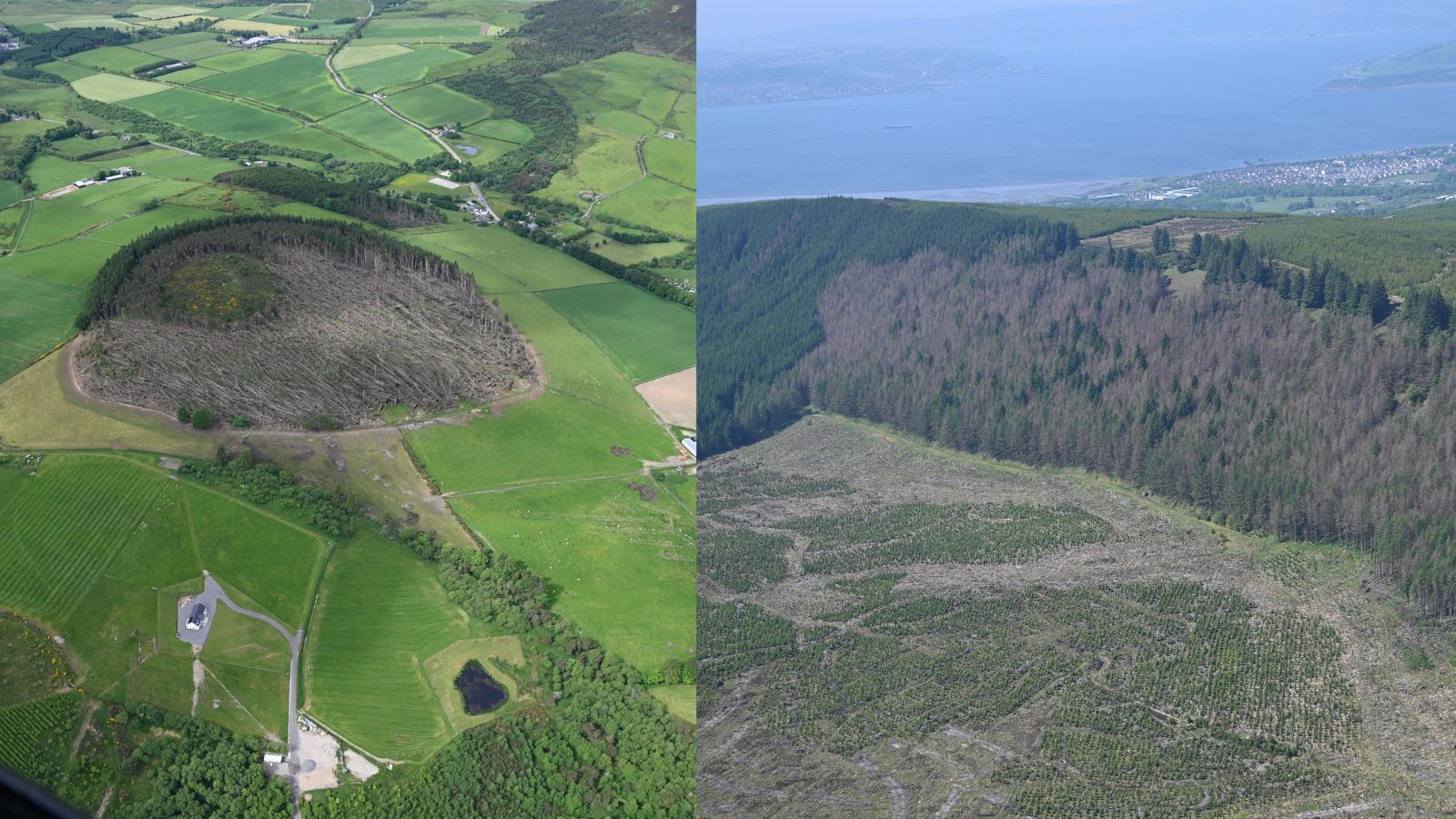28 Sep 2022
Protecting our trees from pests and diseases
James Nott is Scottish Forestry’s Head of Tree Health. He’s been in this current job for nearly a year, after being Conservator for the Grampian region.
During #ScotClimateWeek, he’s keen to share some personal thoughts on some simple measures that both the industry and general public can do to help protect our forests and woodlands.
The recent record heatwave and stormy winters are a salutary reminder that weather patterns are changing because of climate change. Unfortunately, climate change is also another reason why our forests and woodlands are under a bigger threat than ever before.
Warmer climates is partly why there has been a significant increase in the number of non-native tree pests and diseases affecting our woodlands in Scotland. I believe these climate related effects can be devastating for forests but I believe we can all do our bit.
The photos below were taken by my Tree Health team during their surveillance flights show the affects of the disease P. ramorm that is unfortunately too common in Larch trees. 
I think #ScotClimateWeek is important because although we are all aware of climate change, it really helps us highlight how so many sectors are affected. But it also gives us a chance to show the huge amount of work underway to tackle it.
My own Tree Health team are dedicated specialists in their field and work with many partners to offer advice and support on the regulations associated with tree diseases and their management. I’m also very proud of their surveillance work which covers right across Scotland.
But we can all play a part and help out and it is important that we firstly understand how tree diseases or pests are spread.
How are tree diseases spread?
Tree pests and diseases can be transported between or within countries via a number of methods, including:
• on live plant and tree products, such as potted plants;
• via timber and wood packaging materials (WPM), such as shipping crates and pallets;
• on dirty tools, kit, machinery and vehicles, such as chainsaws, boots and all-terrain vehicles;
• through soil and organic material, such as leaf litter; and
• by natural methods, such as wind and water.
What can we do to help?
Tree pests and diseases can have a significant impact on our landscape, but there are some simple steps members of the public can take to help limit their spread:
You're the best defence our trees have. The spores that infect trees can live for a very long time so even if it’s been months since you were last out in the woods, it’s always best to check your kit is clean.
Before a forest visit, remember to Keep it Clean by:
• cleaning your equipment or any kit that carries soil such as tent pegs;
• brushing off any visible dirt from your shoes or tyres; and
• wiping your dog's paws!
‘Don’t risk it!’ – please don’t bring any plant or tree products back from trips abroad, because these might be carrying harmful non-native tree pests or pathogens
Report any trees that you suspect are in ill-health to Scottish Forestry, the Forestry Commission and Natural Resources Wales using TreeAlert.
Further information on tackling tree diseases can be found here.